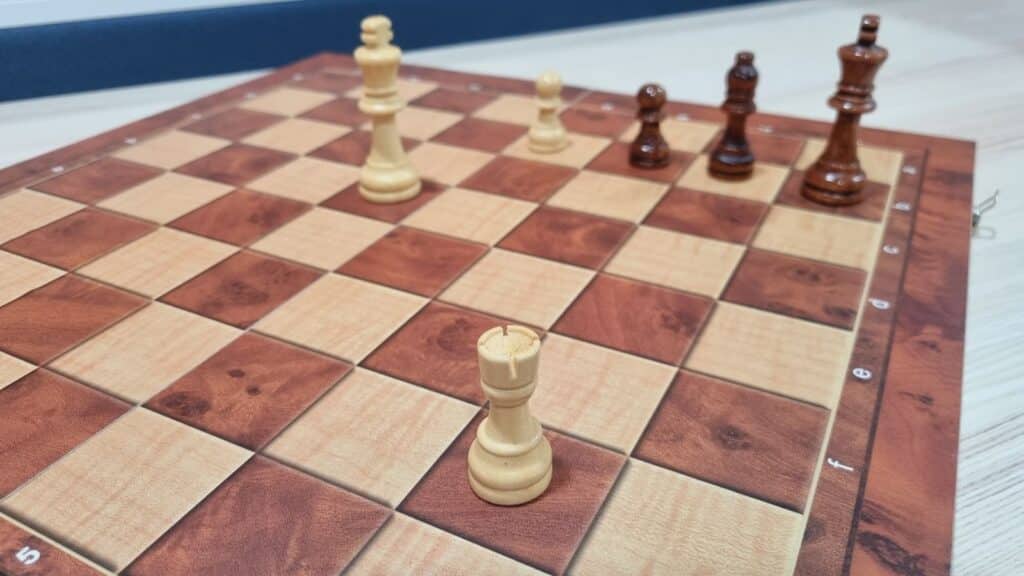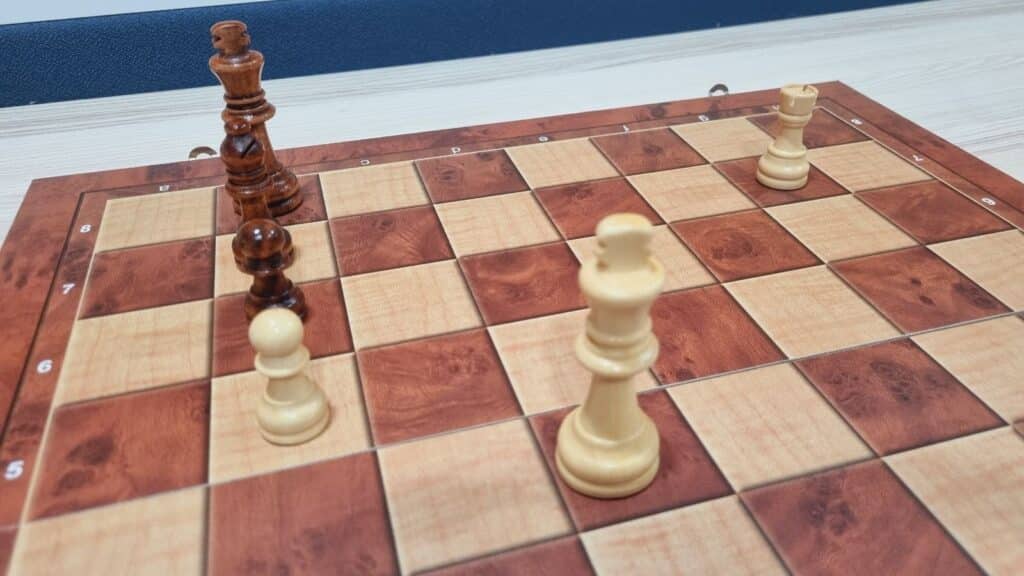
Pawns are efficient but limited defense-wise. Players are usually not afraid to sacrifice pawns since they rarely constitute a material disadvantage when captured. Also, expendable pawns are largely used in traps.
The bishop, however, offers a different scenario. Bishops are not expendable pieces and their vertical moves are helpful both defensive and offensive-wise. Additionally, bishops’ diagonal movements offer an advantage when running through the board.
On the other hand, bishops are not able to move horizontally or vertically, so they cannot occupy squares of different colors. Therefore, the bishop that starts on a black square will remain in black squares throughout the whole match. And the same thing happens with the bishop that starts on a white square.
The rook, despite its lack of diagonal movement, can castle with the king and offer a highly defensive move that bishops and pawns cannot offer.
Also, castling sets the rook at a more central and potentially offensive position. When it comes to offensive combos, however, the rook won’t be as efficient as the bishop and its diagonal movement.
Bishop and Pawn Combination
Considering that pawns can also be promoted and bring other major pieces into the fold, a combination of bishop and pawn can easily seem more profitable than a simple rook, but that numeric advantage may not always be the best option.
If this particular situation happens in an endgame scenario, a white bishop and pawn can only win if the pawn gets promoted. That is because, apart from the pawn, white only has a bishop, and bishops can only occupy squares of the same color.
So, if the king is moved to a black square, the bishop on the white square can never capture it.
With only the bishop left, once the pawn is captured by the king or the rook, the white may be fully prevented from checkmating. That is because a king cannot be put in danger, so using it to checkmate is a very difficult prospect.
Facing Chess Pieces – Rook vs. Bishop and Pawn
So, in this scenario, the player with the rook and the king can easily destroy the opponent’s apparent advantage by capturing the pawn, thus preventing the advantage that would come with the promotion, then moving the king to a square of the opposite color than the bishop’s.
That way, disregarding the way pieces move from then on, the bishop simply won’t be able to capture the king.
Also, with the pawn gone, the chances the bishop gets an ally that can move over the squares of the other color are lost and the only chance of a checkmate happening will involve the king, which will probably be repeatedly checked by the opponent’s rook.
So, if at first the combination of pawn and bishop seem more advantageous, a rook, which is normally not even considered a highly offensive piece, can be a better ally.
This is because defending from possible checks is also an effective way to build up an effective offensive strategy.


